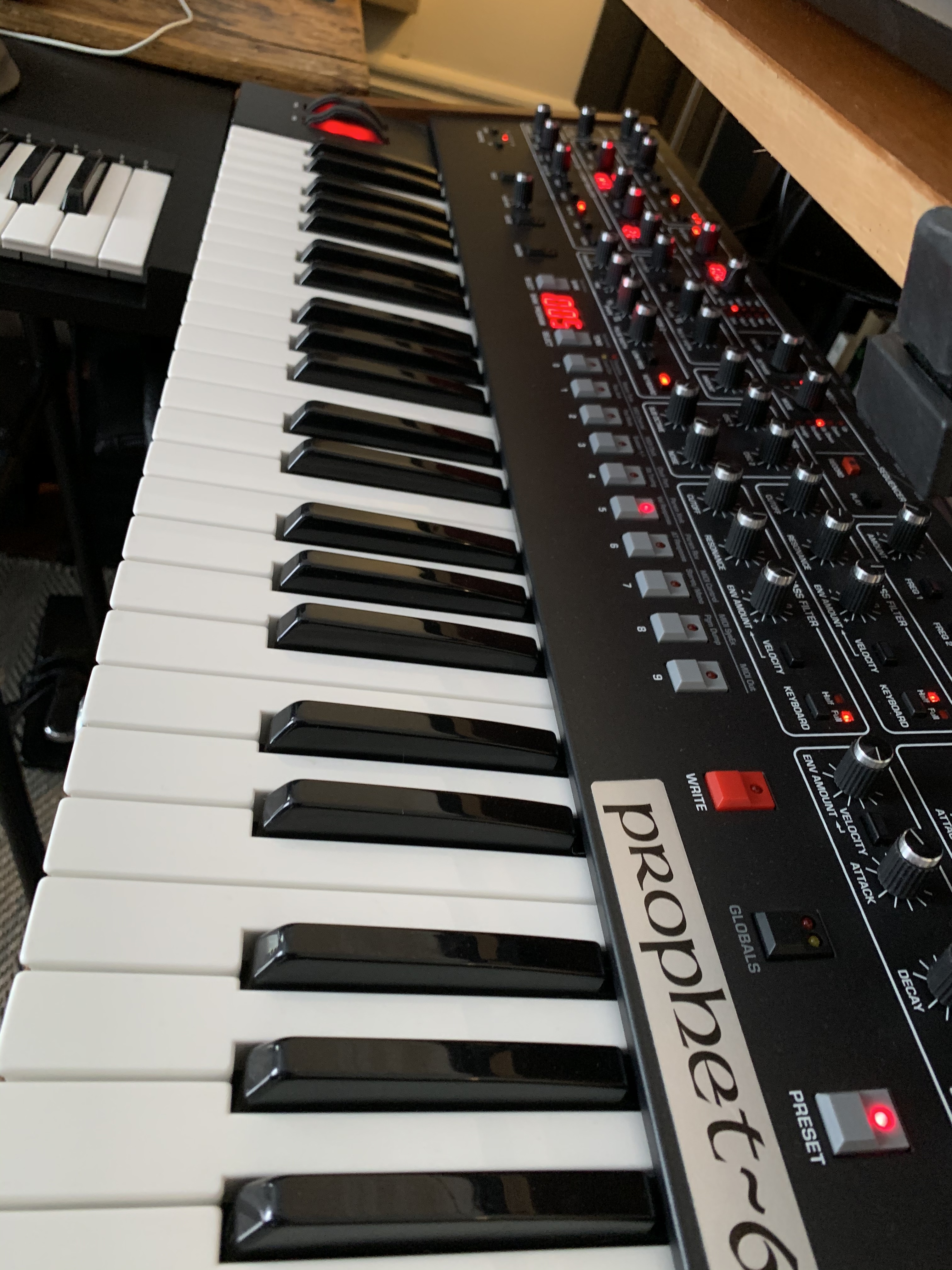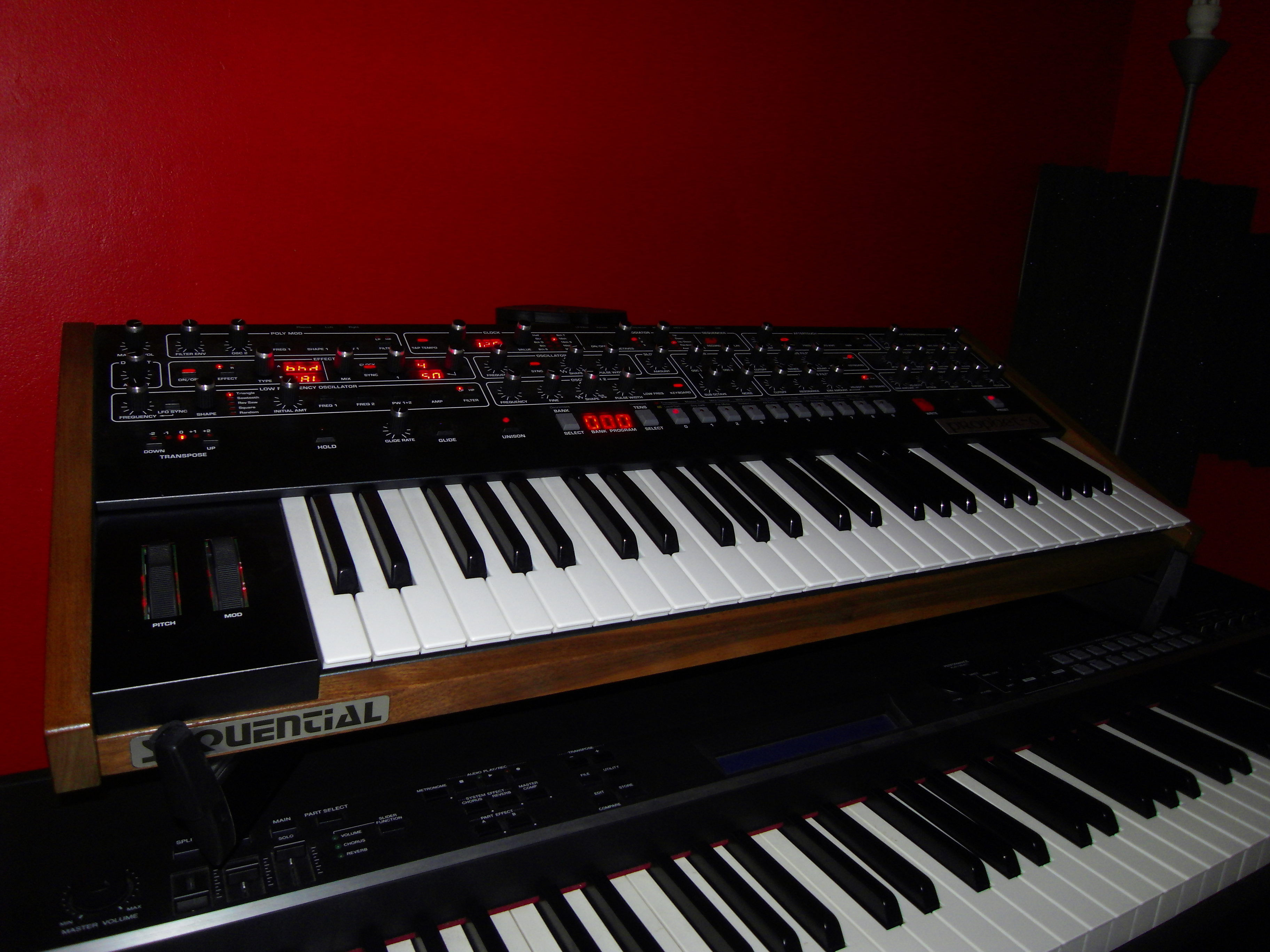

Sine waves ‘subs’ can be too limited and square waves can be too bright, so the choice of a triangle wave is a good one.Ī Prophet 5 voice contained a 24dB/oct low-pass filter, with controls for cutoff frequency, emphasis, keyboard tracking on/off, and (positive only) amount for its dedicated ADSR contour generator. Next in the signal path lies the Mixer, which, in addition to the outputs from the two oscillators and the digitally generated white noise generator, adds a knob to control the level of a triangle wave sub-oscillator one octave below Osc1. But whatever the underlying technology may be, it would be churlish to criticise the manufacturer for offering us the choice of tight tuning or whatever degree of vintage drift we might want for a sound, especially since this is programmable on a patch-by-patch basis. Quite right too! But you have to wonder why genuine VCOs require something to ‘damage’ their performance I suppose that it says a lot about how far tuning stability has progressed in the past 50 years. This is genuine drift that changes as you hold a note and not, as you find on some digital synths, a random pitch variation applied as each note is played. There’s also a knob called Slop that adds some inconsistency - up to a maximum of around ☑ semitone - to the tuning of the oscillators. As on the Prophet 5, you can sync Osc1 to Osc2, and Osc2 offers detune, a low-frequency option, and a switch to disconnect it from the keyboard.

In contrast, you can obtain just a single waveform per oscillator on the Prophet 6, although this is continuously variable from triangle, through ramp and then to pulse-wave shapes. It offers two VCOs per voice, but these are not recreations of the Prophet 5’s oscillators, which offered simultaneous ramp and pulse/PWM waves on Osc1, and simultaneous ramp, triangle and pulse/PWM waves on Osc2. The Prophet 6 is, as its name implies, a six-voice polysynth. Then, when Ikutaro Kakehashi of Roland Corporation suggested to Yamaha that they return the Sequential Circuits name to Dave Smith, and Yamaha generously did so, the idea became too strong to resist. But by the time that 2014 rolled around, the people at DSI had long been considering building a VCO/VCF/VCA polysynth.

The second was for the much more powerful Prophet 12, but some analogue purists, many of whom I’m fairly sure had never played one, objected to its SHARC-powered digital oscillators. The first time was for the Prophet 08, which married DCOs and an analogue signal path to digital contour generators and modulators, and this was generally well received. Once again allowed to use the Sequential name, Dave Smith’s latest instrument is a tribute to a genuinely classic synthesizer.īefore the launch of the Prophet 6, DSI had already resurrected the Prophet name twice.


 0 kommentar(er)
0 kommentar(er)
